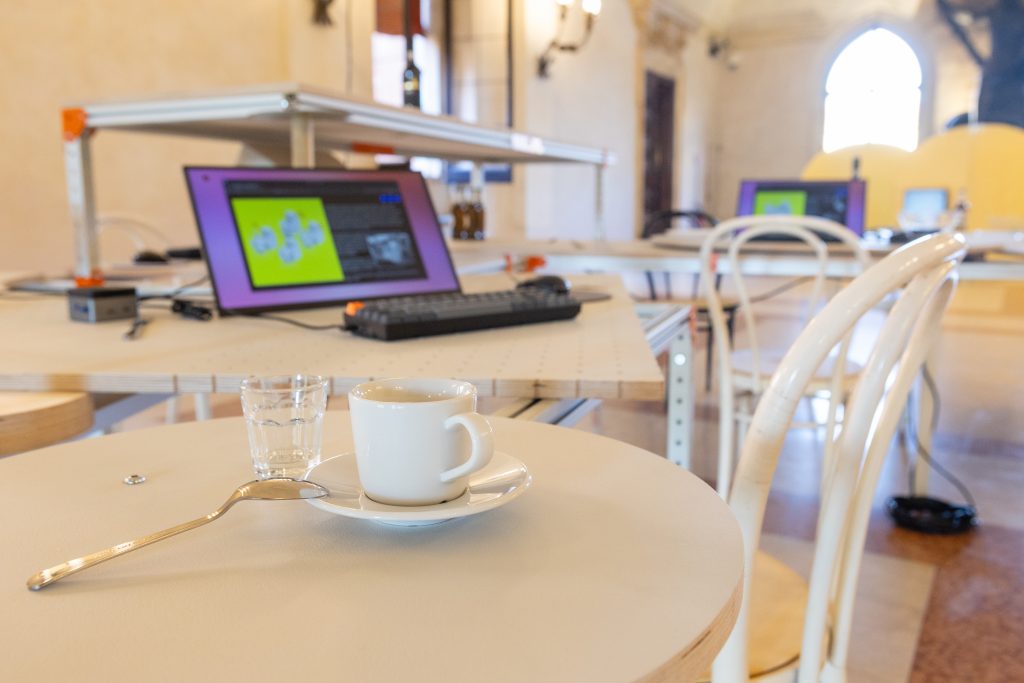
Internet Cafe | EXTENTS Cyrus Peñarroyo, McLain Clutter [Interactive installation]
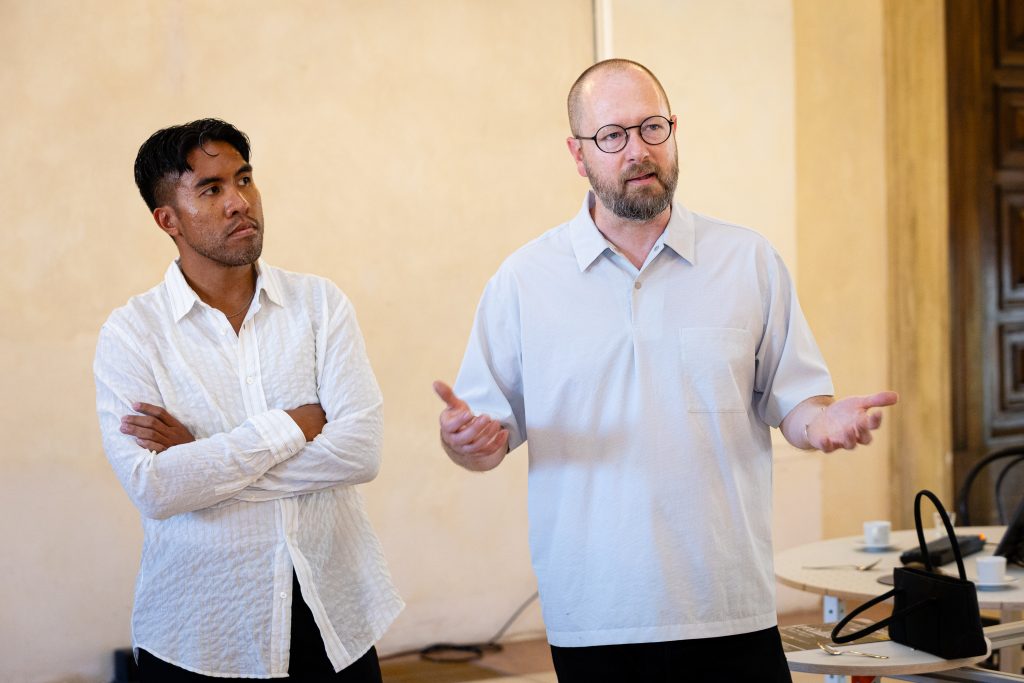
Internet Cafe explores the physical space of the digital, starting from an “archaeological-media” recovery of the first internet cafés. In an era dominated by Big Tech and omnipresent digital connectivity, the internet café today appears as a relic of the past, where the internet was experienced as a place rather than instantaneous service.
Today, we browse comfortably from home and in “private mode” on smartphones. We are immersed in endless cycles of personalized advertising based on our data, and we seek digital communities that reflect our own political and social ideas. But if we look back in the history of the web, we can see the first internet cafés as complex social spaces, where differences coexisted in a hybrid interactive space. — These spaces existed as alternatives to today’s digital habits, often solitary and regulated by corporate logics.
From this perspective, the internet café reminds us of the public cafés described by Habermas, places of public life and discussion, where the encounter with the “other” (real or virtual) shaped society.
The project originated from extensive research on the first internet cafés, particularly between 1994 and 1995, before the use of digital space became pervasive and normalized for constant, singular use. These pioneering places show interesting small details — real “tricks” that could help us today to make digital spaces social again. There are creative situations that show the physical relationship with technology. At times, computers seem almost human, and there are silent and radical experiments where eating and using the computer overlap.
The research then extended to the few internet cafés still active today. Often, these places offer network access to marginalized people or those excluded from dominant connection systems. Based on this analysis, Internet Cafe becomes a physical installation in the space of Palazzo d’Accursio: a real internet café that also hosts the work of the other artists in the exhibition. The project restores materiality to the digital experience, inviting reflection on our now automated and solitary habits in web consumption.
The café is built with a heterogeneous set of materials and architectural components playfully “hacked” to create a unique environment. The public is invited to interact with the work by logging in, browsing, and celebrating connection — digital, social, and architectural.
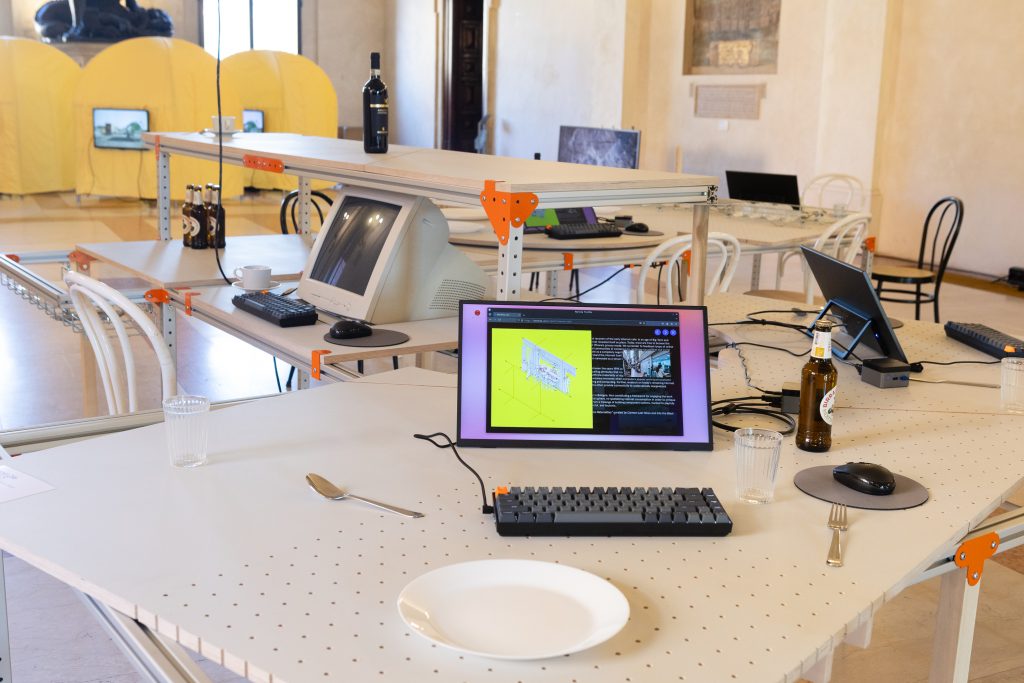
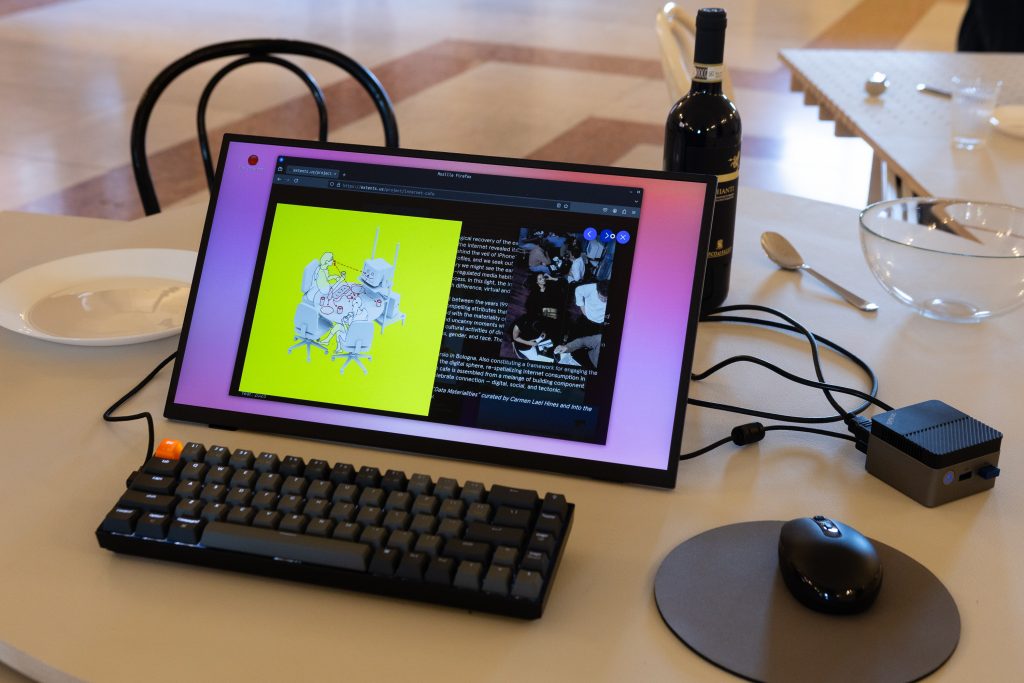
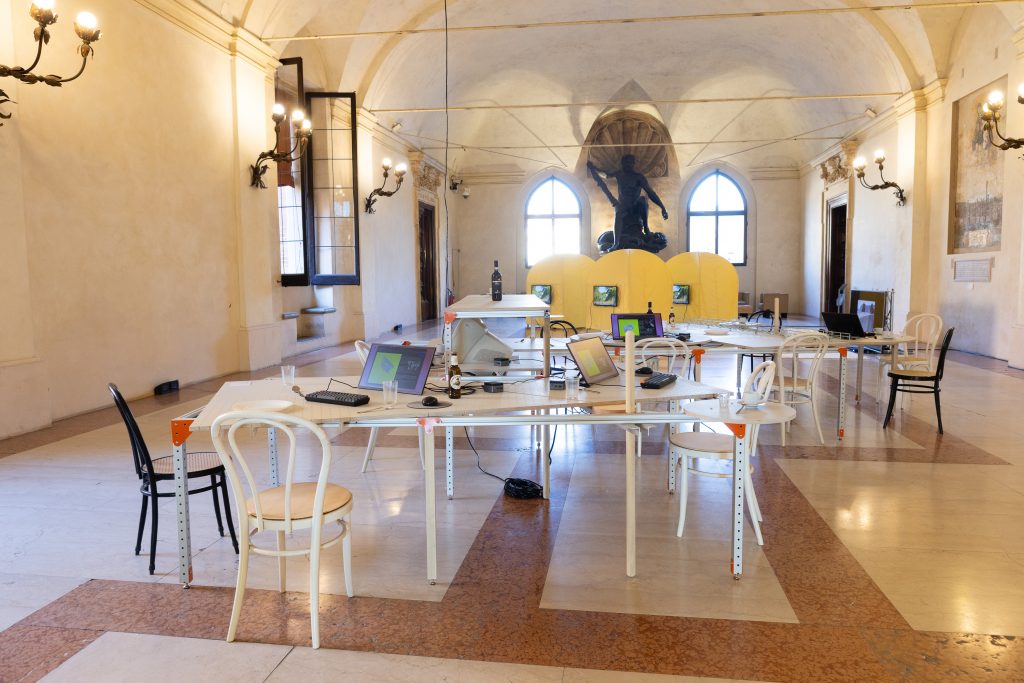
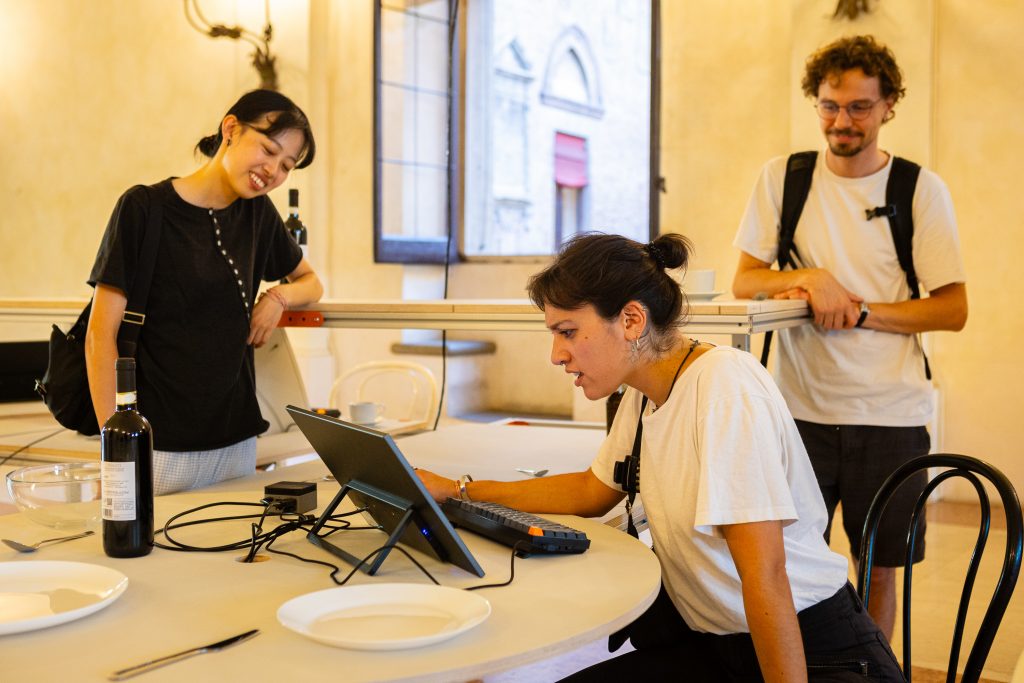
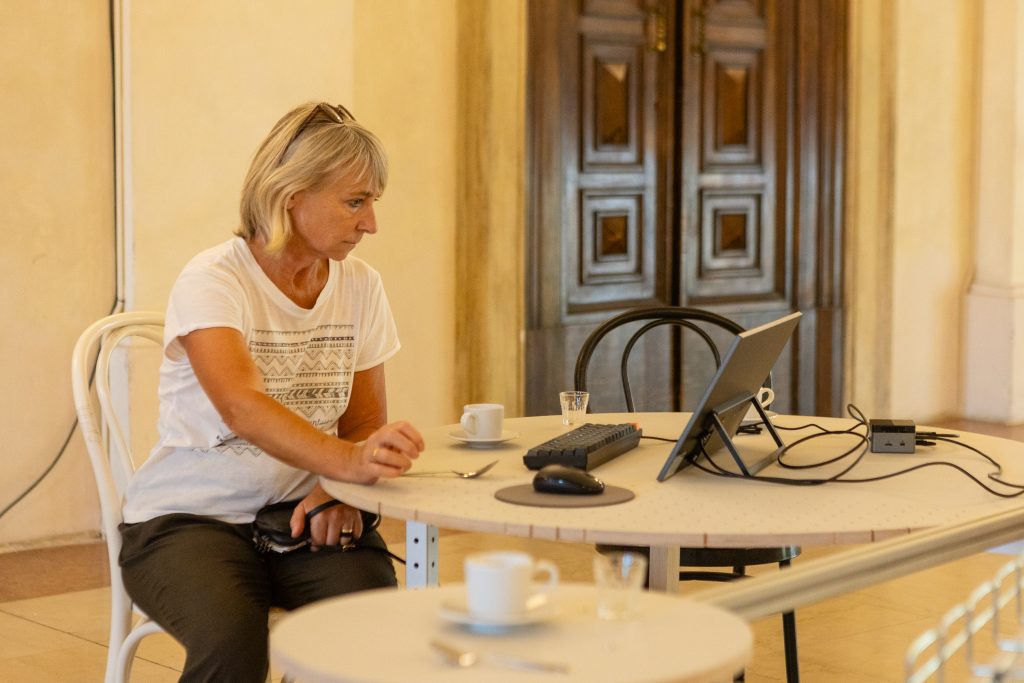
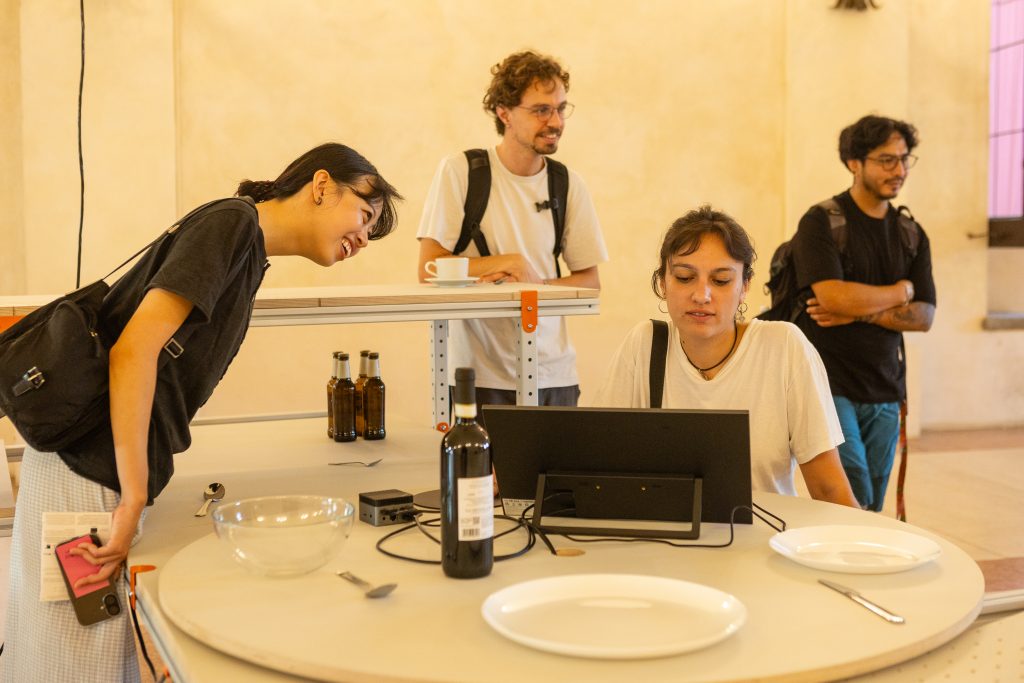
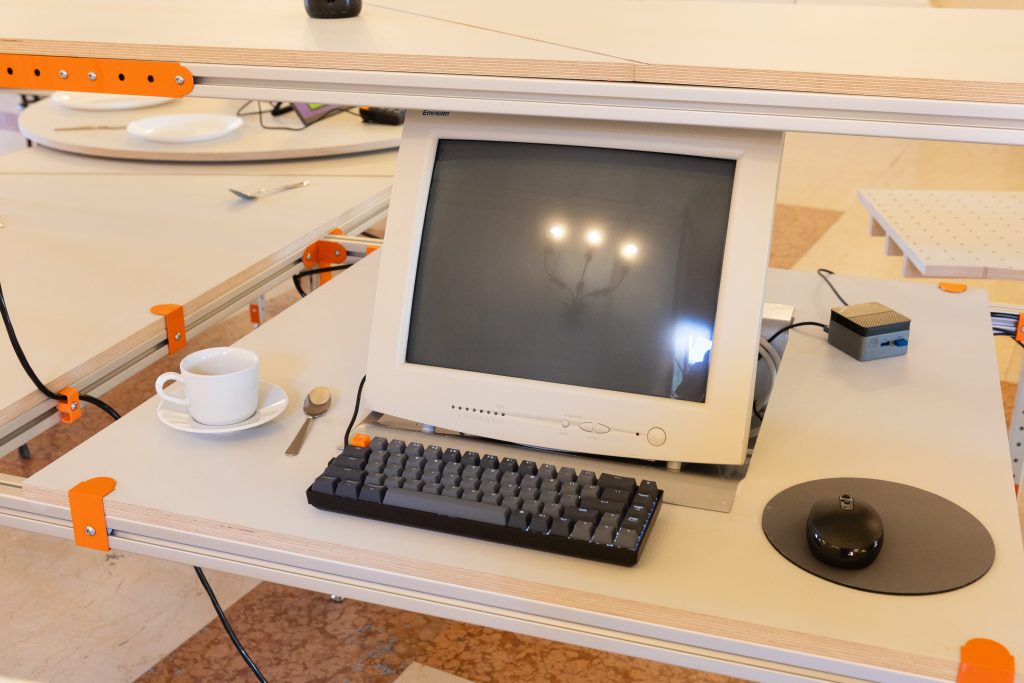
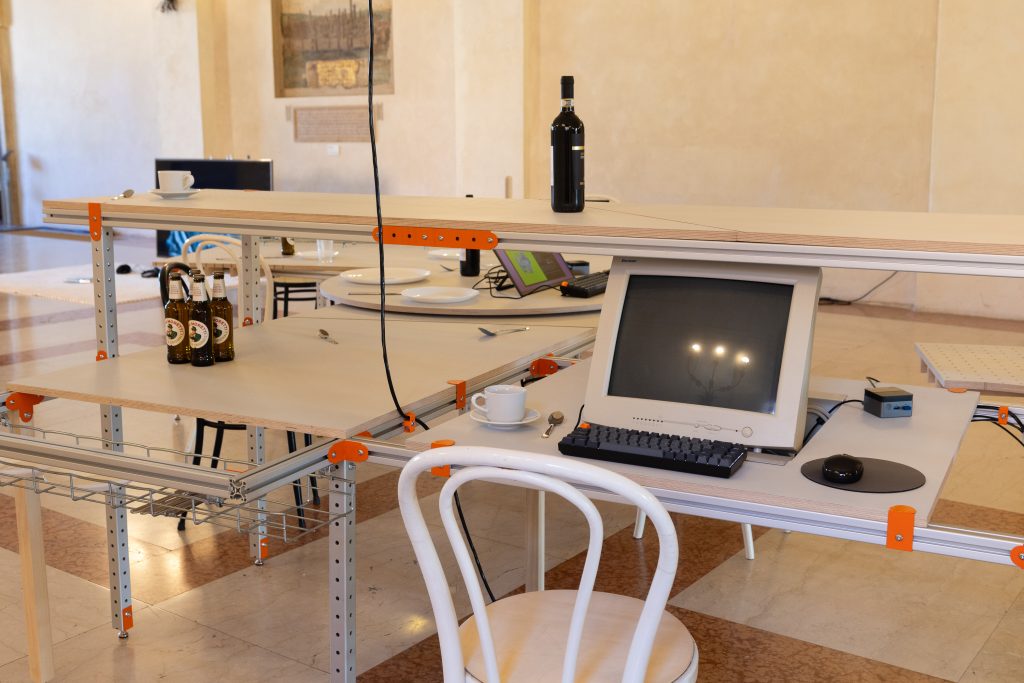
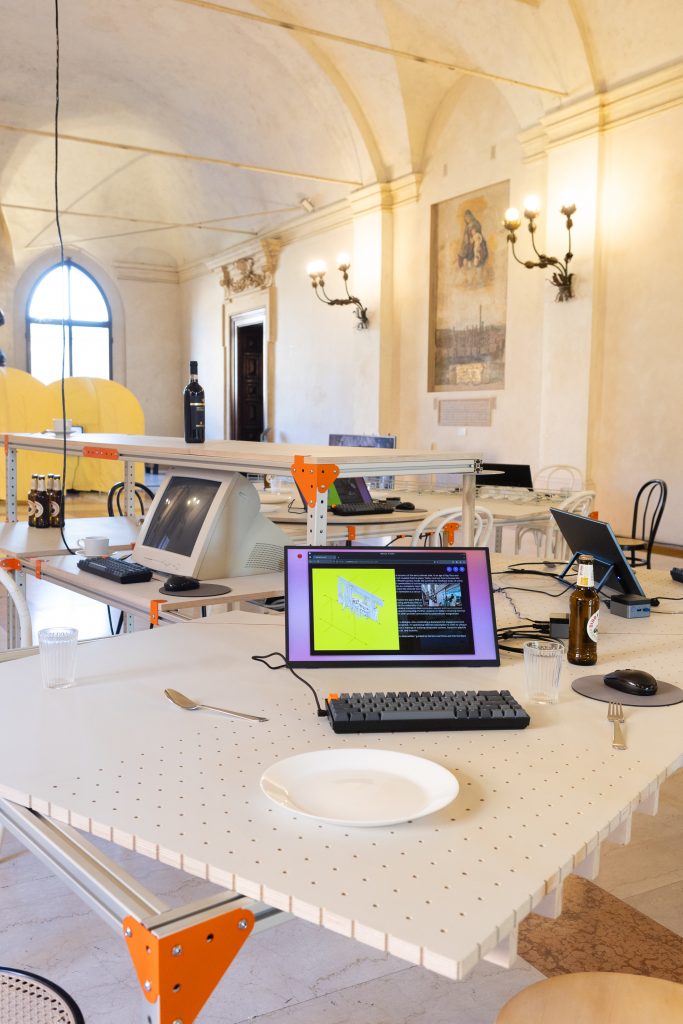
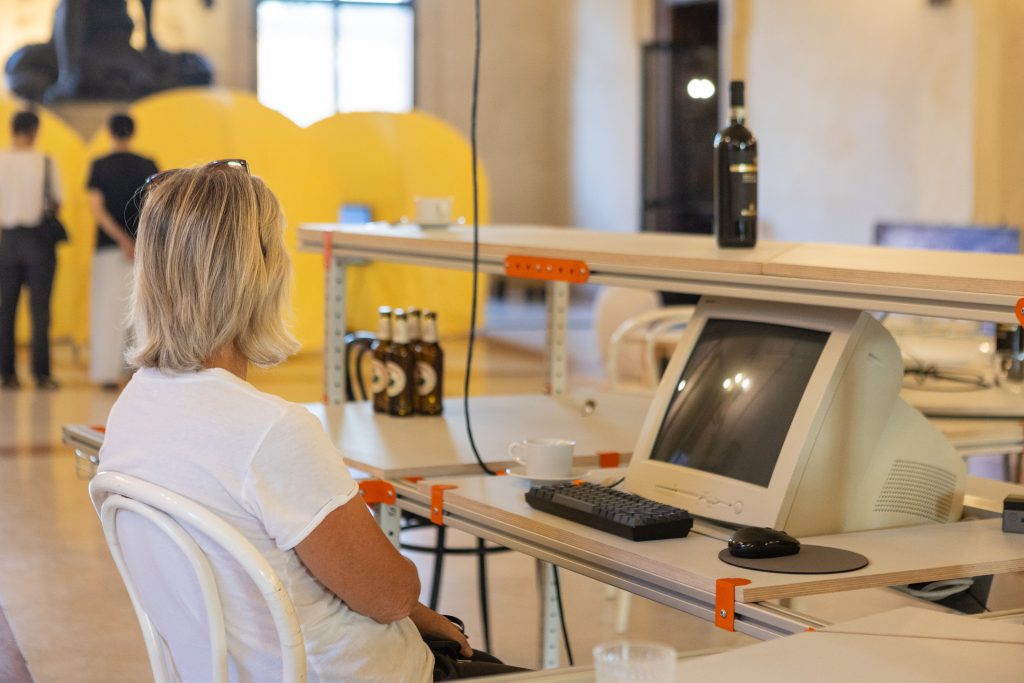
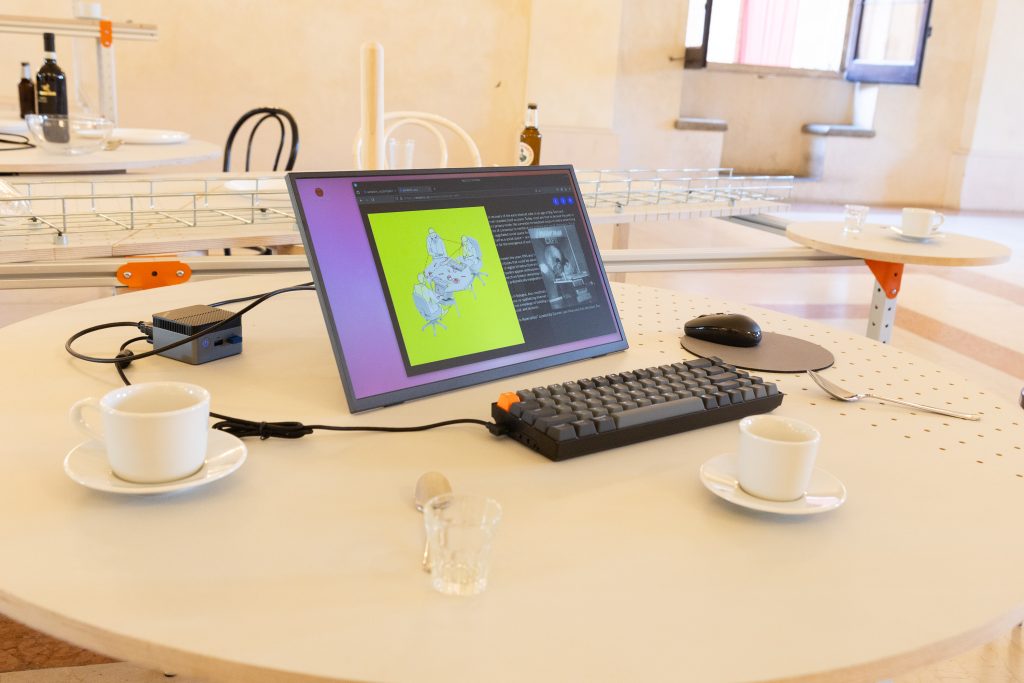
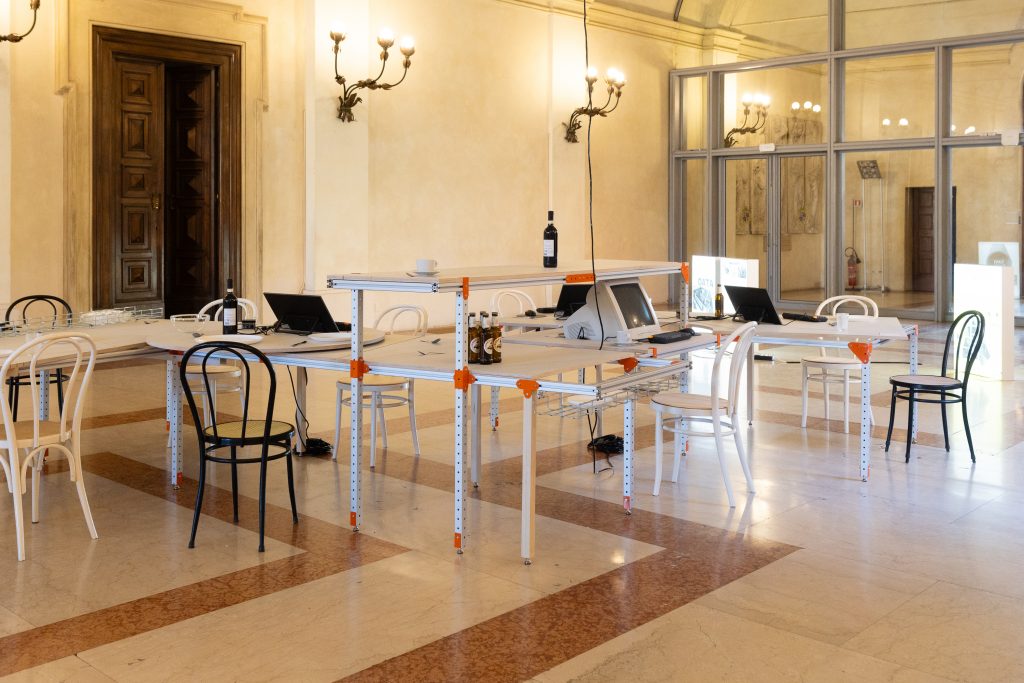
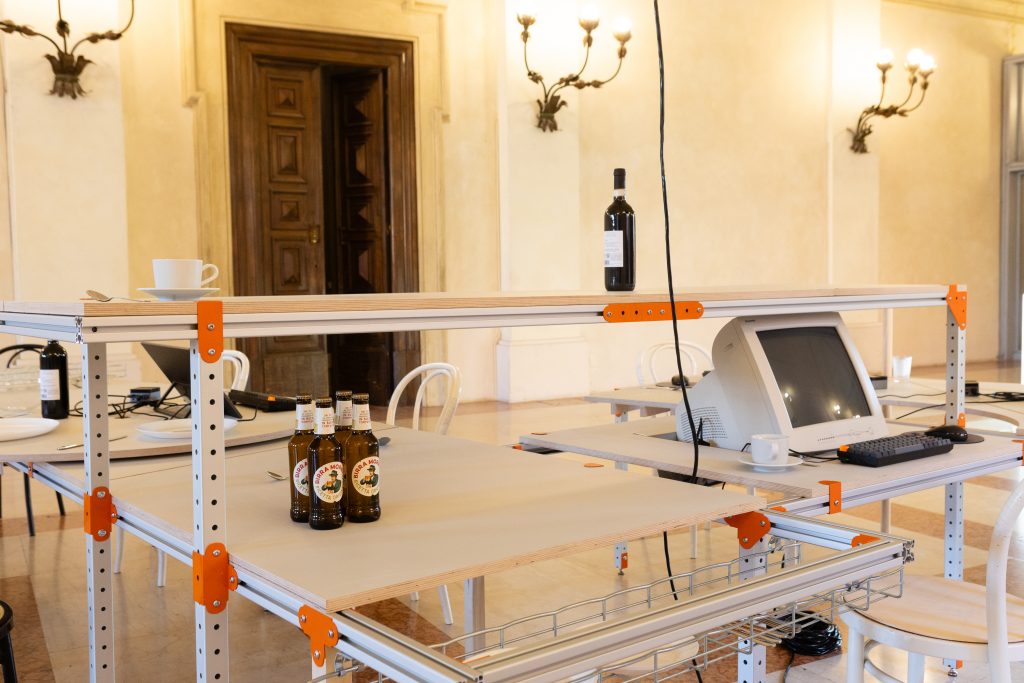
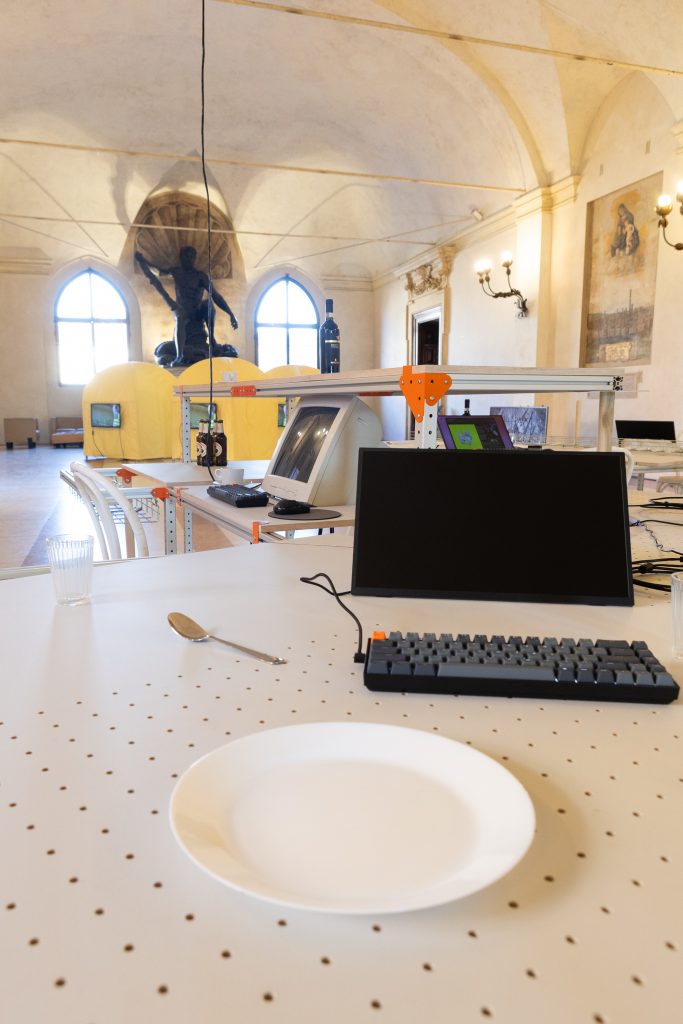
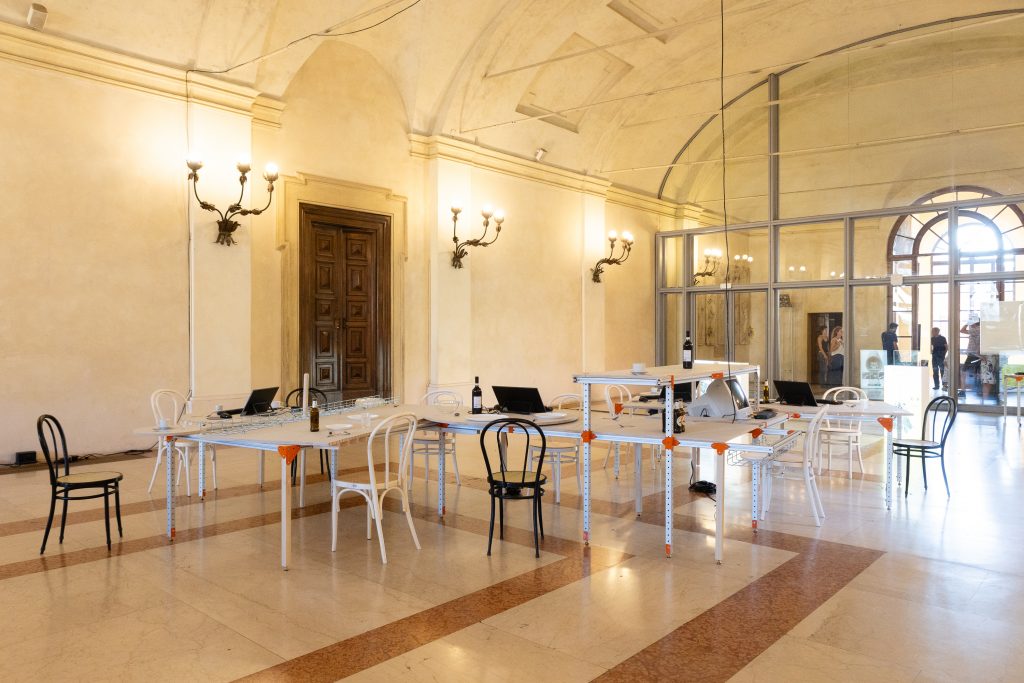
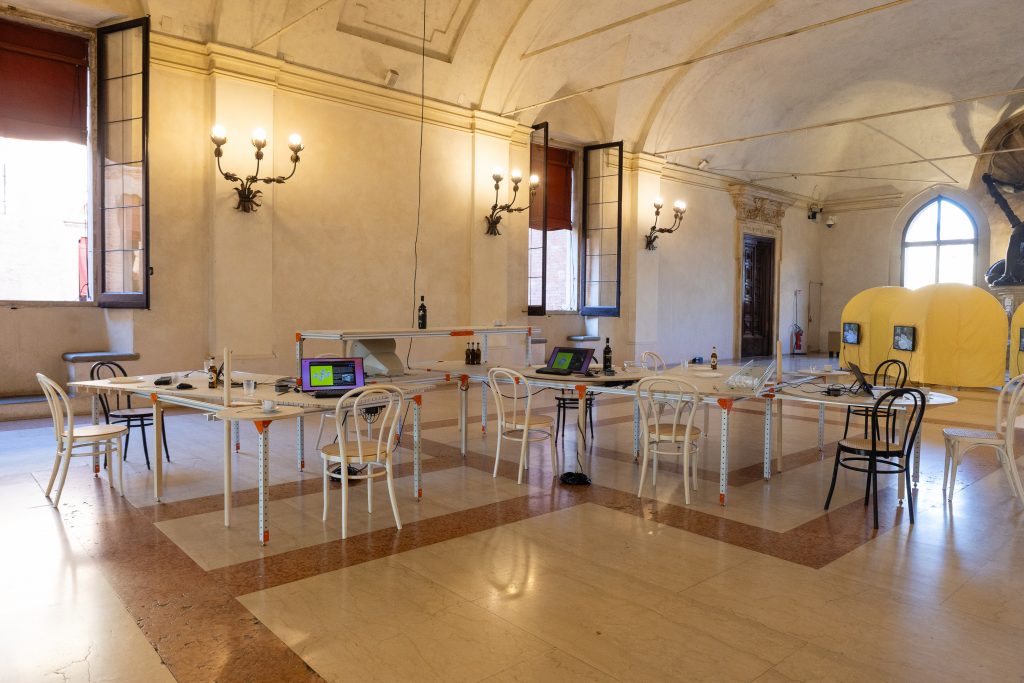
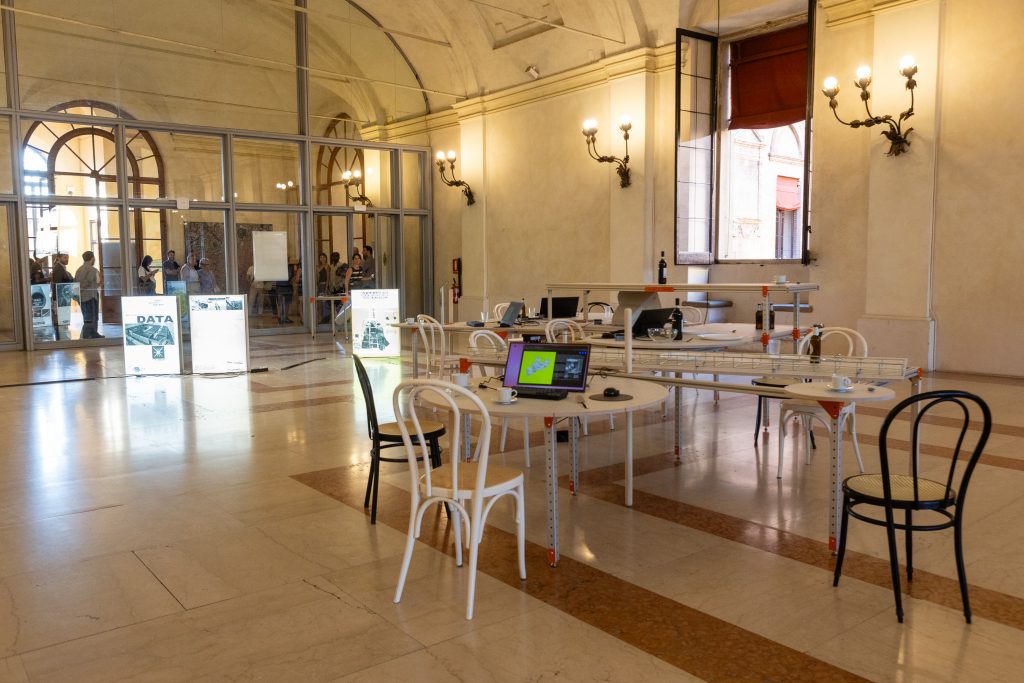
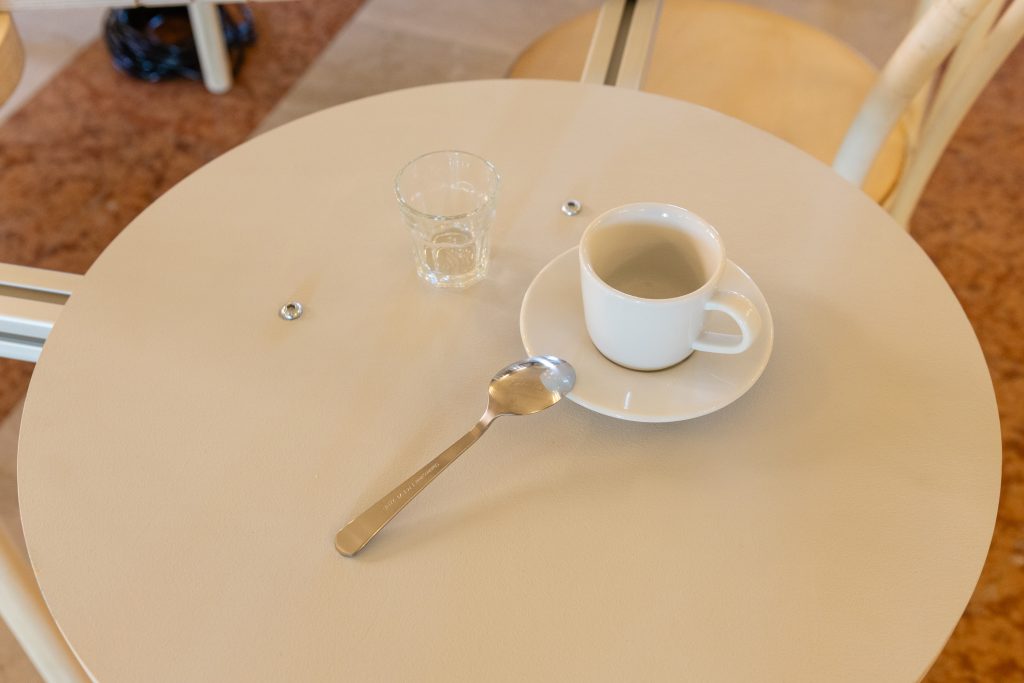
Photos by Massimiliano Donati, Fondazione IU Rusconi Ghigi
Share on Facebook Share on Twitter Share on Pinterest